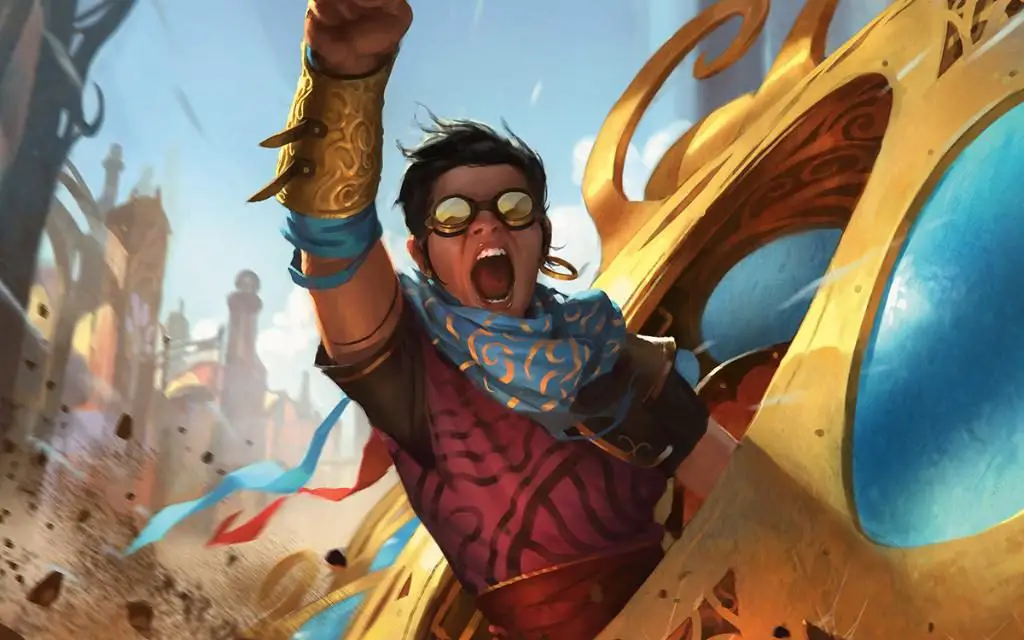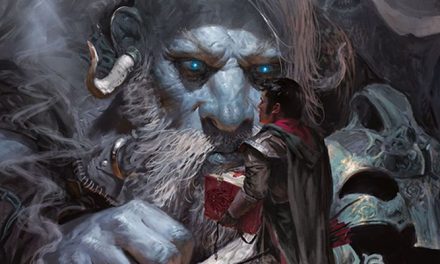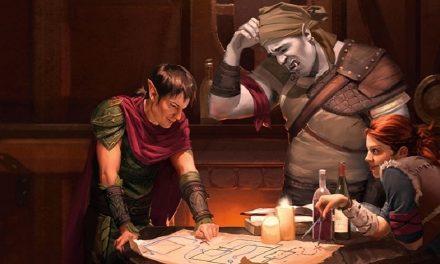Dungeons & Dragons is a tabletop RPG game that has been played by millions of people for over 40 years. It’s not uncommon to find groups of players who have played together for decades! This longevity speaks to the power that D&D holds over its players.
The biggest trick to building a D&D group that stays together is to have games that are fun and engaging for everyone at the table. Not only will this help your group stay together and avoid burnout, but you will have more memorable and successful campaigns!
Here are 9 powerful tips on how to engage players in your D&D game!
Have a Clear Goal for Your Game
You will want to make sure that the characters’ goals are clear. It is easier to engage with a group that is all going in the same direction.
Not only will this make your game more cohesive, but it will also make your life as the Dungeon Master much easier. This is what makes having a Session Zero so important.
You can read more about what goes into a Session Zero here. If I had to choose the single most important article for DMs on this site, it would probably be that one!
There will certainly be plenty of sub-goals in your campaign – and that’s good! But it should be clear what the primary goal of the game is.
In Curse of Strahd, the players need to defeat Strahd Von Zarovich and escape Barovia.
In Tomb of Annihilation, the players need to venture to the jungles of Chult to investigate and bring an end to the Death Curse.
The other objectives and story points in the game occur as the players pursue this primary goal.
Stir Emotions and Feelings in Your Players
It is important to set the mood of your game.
Consider the setting of the adventure and what kinds of emotions that setting can bring up in people. It might help to even write a handful of those emotions down while you’re doing your initial campaign preparations.
I call this list the “emotions palette.” When planning the campaigns, it helps me identify the specific feelings that I want to evoke in the story. When you have a clearly listed set of emotions, you can then start to blend them to make them more complex and engaging.
Fear is a great example of this kind of emotion. After all, there are many different types of ways to portray fear.
The fear in a game like Curse of Strahd is more macabre. The story has classically gothic themes and a sense that you are always being watched.
However, in a story like Icewind Dale: Rime of the Frostmaiden, that fear comes more from the sense of isolation. It’s a loss of hope and desperation in a bleak and frozen wasteland.
If you want to learn more about using fear in your campaigns, check out my article on running horror games in D&D 5e.
Your “emotions palette” doesn’t need to be all fear-based or negative. In fact, even the most terrifying of campaigns should also have lighter emotions available on the “palette” to offer the occasional break.
The characters are the ones on the adventure, but the emotions being created are very much their own. Speaking to those emotions and knowing how to control them is a surefire way to engage your players!
Use your descriptions to stir those feelings.
The dry, stale air of the tomb’s entrance…
The choking humidity of the jungle…
A creeping sense that you’re being followed…
These all trigger the players’ imaginations in subtle but important ways! The emotional responses are small, but they add up quickly!
Related: The 6 BEST Books That EVERY DM NEEDS To Read!
Make Sure All of Your Players Have a Role in the Story.
With all of the characters sharing a common goal within the story, you can now see how each player’s character contributes their own unique aspect to it.
As the Dungeon Master, you should look to tailor parts of the story to specific characters. Include their backstory and personality traits in the adventure to make them more involved.
Each character brings unique abilities, interests, and experience to the story. Cater to this and give everyone “time in the spotlight” to engage with the world through their character.
Let Characters Have Moments to Show Off
Let’s say you have a player who wants to play an Assassin Rogue character. This character specializes in stealthy combat abilities under cover of night and favors their trusty crossbow in combat.
Awesome! Now include moments where they can shine!
Create an encounter where they can show off their stealth, precision, and Assassin abilities. You’ll see the player get excited when presented with a hook that’s meant for their character.
Give them something like a midnight heist. To be successful, the plan relies on extreme accuracy from afar to take out specific threats to the party. They need someone who can infiltrate, get the high ground, and not miss their shots.
The Rogue player will be grinning from ear to ear!
Cool Abilities Are Meant To Be Used
There are few feelings as bad as getting a cool new ability and then never being able to use it.
I remember I once played a Monk and each level up began to feel like a step backwards.
At level 3, I could catch and deflect arrows. I even got a magic item that helped my character do it better! But for the rest of the campaign, no ranged attacker ever targeted my character again.
At level 6, my guy’s fists counted as magical when overcoming resistances. He went on and on about wanting to punch a ghost. When we eventually encountered a ghost, a sudden group of giants barged into the room. The party had to flee and he was prevented from getting to do the one thing that he mentioned wanting to do more than anything else. It was a kind of silly goal, but it was important to the character.
Later, we were fighting the giants. I thought it would be cool to pull some “Attack on Titan”-type stunts by jumping from giant to giant and wailing on them. Instead, I was penalized and not allowed to pull off some awesome cinematic monk stunts.
Honestly, I’m not bitter about it and it did create a learning opportunity.
The DM later called me to apologize. He realized that he had been making my character basically boring and useless for the entire campaign.
Nevertheless, I think that campaign really showed me just how important it is to have the DM on the same side as the players.
You can’t just create encounters that challenge the players; you need to also create encounters that let them feel empowered and show off their abilities!
Let Players’ Characters Grow
Another fun way to engage players is to present opportunities for their character to grow and develop their skills or abilities through interactions with other characters.
Not only will this engage players, but it also adds a ton of opportunity for your group to add to their roleplaying.
This can certainly happen during an adventure, but it’s also very useful for adding more flavor to the group’s downtime. You can check out this article on running downtime in D&D 5e for some ideas that add to the story while also giving players new benefits!
There might be situations where a character has to perform a task that they aren’t particularly skilled at.
The clumsy Wizard is trying to sneak their way into a library to get their hands on a rare book.
Perhaps the hilariously shy Druid has found themselves “adopted” by a remarkably extroverted new friend. This new friend has decided that they want to get the Druid out of their shell.
While the Barbarian is a force of nature on the battlefield, they aren’t so good in social situations. They are now having to try to conduct themselves “properly” as the party finds themselves at a noble’s estate for a dinner party.
These situations create unique challenges for characters that add to the party’s roleplaying and can possibly develop the character further. More often than not, these situations tend to become very memorable and add nuance to the story.
While the Wizard may not be very agile, they learn some new ways to go about being stealthy. The Druid begins speaking up more and makes some new friends that will come in handy later. Meanwhile, the Barbarian has learned to use a fork when eating.
Enable the Players to Create Their Own Story
Create scenarios where players can have an opportunity to create their own storylines and quests that may not come from the rulebook.
As a DM, it always brings a proud tear to my eye when my players take such an interest in aspects of the story that they create their own additions to it.
That’s a sign that they are truly enjoying interacting with the world that is being created. As a DM, the rule of “yes and” is particularly important here as you let them explore.
What results is a part of the story that is entirely unique to your group. When we’re away from the table, the players in my current
No example is greater of this than the group’s much-beloved NPC, Pyotr the Peasant, and his son, Pyotr Jr.
A Tale of Two Pyotrs
The party first met Pyotr the Peasant outside of the village of Barovia.
The party’s resident mischief-maker and Bard, Vladimir Von Viktor, took to harassing Pyotr with some inventive uses of the Mage Hand spell. With frequent spectral slappings and other such shenanigans, the lovable but dim-witted Pyotr was convinced that he was being haunted. When the party established their base of operations in an old, abandoned tower, they brought Pyotr and his family along.
Ultimately, when the party’s tower fell under attack they weren’t able to save Pyotr or his wife. However, they were able to save his teenage son, Pyotr Jr.
Unfortunately, Vladimir had also met an early end in Barovia around this time. The player, now playing a Gnome Psi-Warrior named Flintlock, must have taken pity on Pyotr Jr. The young Pytor Jr. told the party about the haunting that harassed his dad and, in the boy’s mind, eventually led to his death.
Training Pyotr Jr.
Flintlock made it his personal mission to train Pyotr Jr. how to be a warrior.
Taking the gangly and awkward teenager under his wing, Flintlock began spending all of his downtime training Pyotr Jr. with military-style exercises. He explained that it was ultimately Strahd’s fault that the boy’s family had been slain and was determined to help the young boy get revenge.
Not only did this work to develop Flintlock as a character, but it adds to the story. The group keeps a keen interest in how Pyotr Jr.’s training is going. When the time comes, they fully plan on having him help them storm Strahd’s castle.
In the entire
As a DM, there are times when you will need to say “no.”
But there should be far more times when you say “yes and…”!
Don’t Railroad Your Players!
Include clues or information in the environment that gives players a chance to figure out what is going on and where they should go next.
This will help reduce frustration by giving them an opportunity of figuring it all themselves. You shouldn’t be directly saying “you need to talk with this person.”
Trust me…
Nobody likes to be “railroaded” in a game that’s all about choice.
Players should have the power to create their in-game experience and should not be railroaded by the DM. It’s okay sometimes if they get lost or don’t know where a place is. But it will make your life easier as the DM when players are well-engaged with choices that can affect play.
Generally speaking, situations that require railroading are almost always the DM’s fault. It means the party wasn’t given enough information to make their own decisions.
If something particularly awful is bound to happen from the party’s decision, you might call a quick “timeout” and ask them something like “are you sure you want to do that?” just to make sure that they’re considering everything.
If an important NPC requires an antidote and the MacGuffin is on top of a treacherous mountain outside of town, make sure that there’s plenty of chances for the players to learn this. Consider how the NPC is important to the party, what the party will gain from helping the NPC, and how they can learn the location of the MacGuffin.
If the party learn all of that and say “Ok, we need to sail to another continent entirely” you might double-check to see where they’re coming from. It’s possible that you didn’t explain things as well as you might have thought or that the party is telling you that they really don’t care about this plot hook.
But if every person in the city begins shepherding the party towards the mountain, that puts some rails on the campaign that are sure to make players less engaged.
Players engage when their choices matter and they aren’t just having to follow the DM’s instructions.
Speaking of which…
Create a Narrative with Each Player’s Decisions Affecting How it Progresses
This one is short and something that’s been touched on in the other tips, but it deserves its own spot on this list.
The game master should not have all the power in a dice-based RPG.
Give players opportunities to make decisions that affect how their character’s narrative progresses. By working together, the story can take unique twists and turns that are massively impactful to individual characters.
The party may go down paths they would never had explored if they were all on their own!
Generally speaking, the DM sets the situation. The players then decide what they want to do and the DM explains what happens next.

Players want to know that their choices have meaning. This will help everyone stay engaged and be more thoughtful about how each player’s decisions affect the group’s in-game relationships with each other as well as various NPCs.
Be Flexible About What Happens During Gameplay
This is a trap to avoid, and it’s happened in many of my games.
Don’t be afraid to change your plans if necessary!
Player choices will often result with different outcomes than what was originally planned out during your campaign prep.
It’s not unheard of for a DM to be fearful about what the players want and how this would affect their world. I’d guess that a good 40% of D&D memes are about players completely subverting the DM’s plans.
But it actually is better if you are flexible, as long as the NPCs’ desires in-game remain intact. For example, having NPCs do certain things that they were already going to do beforehand. If the party is aware of the evil wizard’s scheme but then decides to go become pirates, the evil Wizard will not put his scheme on hold.
This is why it’s best to understand NPC motivations and not just a generic plot hook that would introduce them. This is especially true if we’re talking about a villain that you have planned!
Don’t forget to have fun!
Ultimately, the key to Dungeons & Dragons is, of course, having fun. As long as everyone at the table is enjoying themselves, then the game should be a success!
It boils down to three steps:
- Make sure your players’ needs have been met
- Give them opportunities to do awesome stuff that their characters want to do
- Don’t forget to have fun yourself!
Your players should be having fun and enjoying themselves, but as the Dungeon Master you’re also responsible for making sure they have what’s needed to enjoy it.
It might sound like a lot to manage! But if you take care of your players and their characters, then the game will be more rewarding for everyone.
Lastly, it’s important to remember that a lot of players are going through something in their life. Dungeons & Dragons can be a fantastic outlet for people- one where they’re able to explore themselves and interact with others who have similar interests without pressure or judgment from others.
Whether in-person or online, leave the real world away from the gaming table. Instead, focus on telling an awesome story with your friends.
The troubles of real-life will pass with time, but the memories that you make with your group will last a lifetime!









